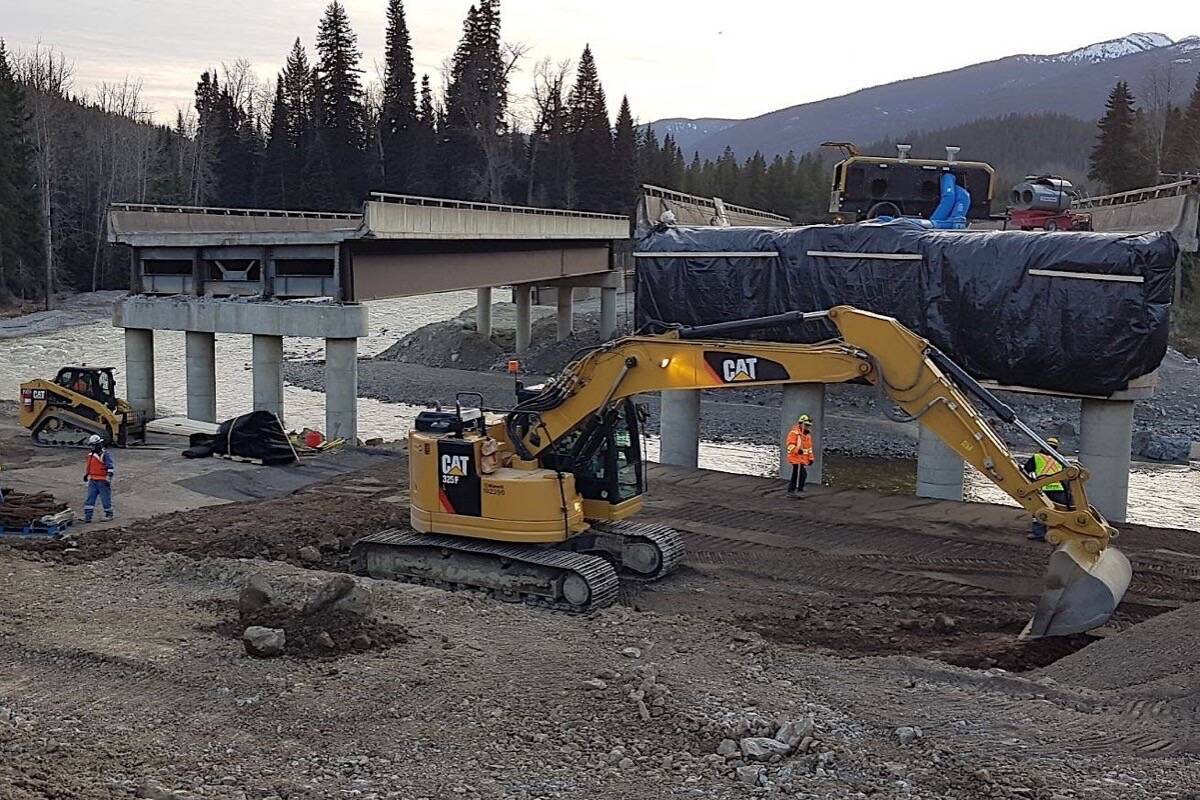Two weeks after B.C. Environment Minister George Heyman joined Canada’s large delegation to Glasgow, Scotland for the 26th annual UN climate change conference, the province was rocked by a record mid-November rain event that will disrupt the province’s finances and its environmental priorities in 2022 and beyond.
Washouts on 20 sections of the Coquihalla Highway, massive landslides that closed Highway 1 and cut the CP and CN rail lines in the Fraser Canyon, evacuation of Merritt and Princeton and flooding of 800 farms in the Fraser Valley have shocked governments at all levels. Repair costs for B.C. haven’t begun to be tallied yet, but the province’s latest estimate of a modest $1.7 billion deficit for 2021-22 is sure to be revised upward as a new budget is prepared for release Feb. 22, 2022.
And repairs are just the start. The failure of dikes protecting Sumas Prairie was just one of the long-standing infrastructure weaknesses laid bare by the “atmospheric river” that deposited a month’s worth of rain across southern B.C. in two days. Climate scientists are reluctant to tie any single weather event to increased greenhouse gases, but B.C. is now world-famous for the type of problems that may lie ahead as emissions continue to grow.
Drone flyover of #BCHwy1 at Jackass Mountain on Friday.
Crews continue road and bank reconstruction in preparation for Acrow bridge launch.#BCStorm #Lytton pic.twitter.com/tcCXaPjHtH— BC Transportation (@TranBC) December 13, 2021
In Glasgow, Heyman highlighted B.C.’s forest carbon offset program, where areas set aside from logging in what is now known as the Great Bear Rainforest are sold as carbon credits to companies to offset their operational emissions.
Premier John Horgan’s CleanBC plan has far-reaching goals, including 10,000 public electric vehicle charging stations by 2030, the same year as 90 per cent of all new vehicles sold in B.C. would have to be zero-emission. CleanBC includes a hydrogen strategy for fuelling heavy trucks and carbon capture for renewable fuels, both with technology still in its infancy. B.C. has funded the world’s first electric commercial float plane, for short hops between Victoria and Vancouver, with battery technology still in development.
RELATED: B.C.’s forest carbon offsets showcased in Glasgow
RELATED: B.C.’s greenhouse emissions, carbon tax keep rising
Electrification for oil and gas industry and liquefied natural gas exports to help Asian countries get off coal power are key elements of B.C.’s strategy, with work continuing on the Site C dam near Fort St. John to supply more hydroelectricity.
More than a decade into Canada’s first consumer carbon tax, B.C.’s emissions continue to rise with population growth. And with Canada accounting for less than two per cent of world emissions, China and India combined are now producing more than half. The main failure of the Glasgow talks was China and India’s growing use of thermal coal for power, which India agreed only to “phase down” by 2070. Meanwhile China’s coal use continues to grow by more than Canada’s total production each year.
B.C.’s economic forecast council met in early December, with top bankers and economists projecting B.C. leading provinces in recovery from the COVID-19 with growth of 4.2 per cent in 2022. That estimate may be low, as it doesn’t include the impact of the November deluge and the deficit spending that will be required to fix the damage.
@tomfletcherbc
tfletcher@blackpress.ca
Like us on Facebook and follow us on Twitter.

